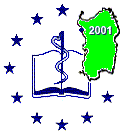 |
The electronic edition of scientific journals may influence the determination of their own Impact Factors? Moreno Curti, Vanna Pistotti*, Gabriella
Gabutti, Andrea Zeccato, Carmine Tinelli, Catherine Klersy
|
|
|
Click here to see the ppt presentation |
|
|
 |
Background
Many journals have now a web site but the full text of articles are rarely available at no charge. The "typical" electronic version of a printed journal offers today only a table of contents and abstracts, usually with no restriction, while the view of full text is restricted to their subscribers, site licensees or to those using the pay-per-view system. A few of the most known journals publish only electronic version of an article and this one will never appear in the print version. Some have drawn up contracts with third parties. Packages of full-text journals are offered through an annual subscription, even when the library does not pay for a printed copy: the full text access is free, better say it appears free, to users on a campus or consortium network. Many database distributors like Ovid, SilverPlatter, Dialog have now linked their bibliographic records to full text articles which are immediately available when their users subscribe to that specific journal. A sort of "one-stop-shop" of the medical information. Among biomedical journals those classified
by the Institute for Scientific Information (ISI) in Philadelphia, are
the most relevant. Their quality is related to the "impact factor", a term
coined by Eugene Garfield, the inventor of the Science Citation Index,
and Irving H. Sher in the early sixties. In 1955 Garfield suggested that
reference counting could measure "impact" but the term "impact
factor" was not used until the publication of the 1961 Science
Citation Index (SCI) in 1963. This led to a byproduct, Journal
Citation Reports (JCR), and a burgeoning literature using bibliometric
measures. The current impact factor is given by the ratio of
the number of citations of the journal over one year (e.g. in 1999) to
the number of articles published by the same journal in the two years before
(e.g. in 1997-1998). These considerations raise some questions: is the
availability of the electronic version of a journal associated with the
value of the impact of the same publication? Do changes in impact factor
correspond to increased availability of the journal on the Internet?
Methods This was a retrospective longitudinal
study. The availability of the journal on the Internet, in the different
years considered (1995 to 2000), was assessed transversally between December
2000 and January 2001. The presence of table of contents (TOC), abstract,
full text and free full text were evaluated. The journal considered were
those ranked among the first 20 of each of the following subject categories
in year 1998: cardiac and cardiovascular system; medicine, general &
internal; medicine, research & experimental; multidisciplinary sciences;
othorinolaryngology; surgery; hematology and transplantation. Changes in
the impact factor over the years were modelled (at univariate and multivariate
analysis) by means of a linear regression model, with calculation of Huber-White
robust standard. Google.com was utilised as a search engine to identify
journal web sites. Only sites with free access were included, where no
subscription to journal or package of full text journals was required to
enter the site.
Results Overall 118/139 journals (85%) had
the TOC available on the Internet, of these 107 (77%) had the abstract,
97 (70%) had the full text and 33 (24%) the free full text. Median impact
factor for all the considered journals was 1.65 (0.84-2.80), 2.08 (1.00-3.51),
2.10 (1.20-3.44), 2.21 (1.63-3.65) and 2.35 (1.48-3.56) for years 1995
to 1999 respectively. Changes of impact factor in time appeared to be statistically
significant, at regression analysis. Changes over years were different
among subject categories. Regression models also showed the presence of
TOC, abstract and full text on the Internet to be significantly associated
with the impact factor, even when time and subject category were accounted
for higher impact factors were observed when the journal had an electronic
version.
Conclusions The impact factor has been used for
years to evaluate journals quality. In many research and academic settings,
the impact factor is also used to fund research based on the evaluation
of the quality of the several groups of researchers. Thus, it is particularly
relevant to be aware of the appropriate use of the impact factor and to
understand its limitations. Many factors contribute to the number of citations
per paper, including the science; the nature of the research;
the style of the communication (papers vary in the number of
references they include, from none to over 100); editorial policy
(several journals ration the number of references per article);
circulation and readership (more readers equals more citations);
citation bias (comparable to submission bias and publication
bias); conformism (scientists often cite those papers that are
currently cited); authors' tendency to cite their own work;
and referees' self promotion (referees' tendency to recommend
inclusion of references to their work). In addition to those
already reported, a further limitation of this indicator appears here,
where impact factor values would be related to the amount of circulation
of the information through the Web. However this could be a temporary limitation,
related to diffusion of journals on the Internet and Internet itself .
Selected References
|
|
|
|
|